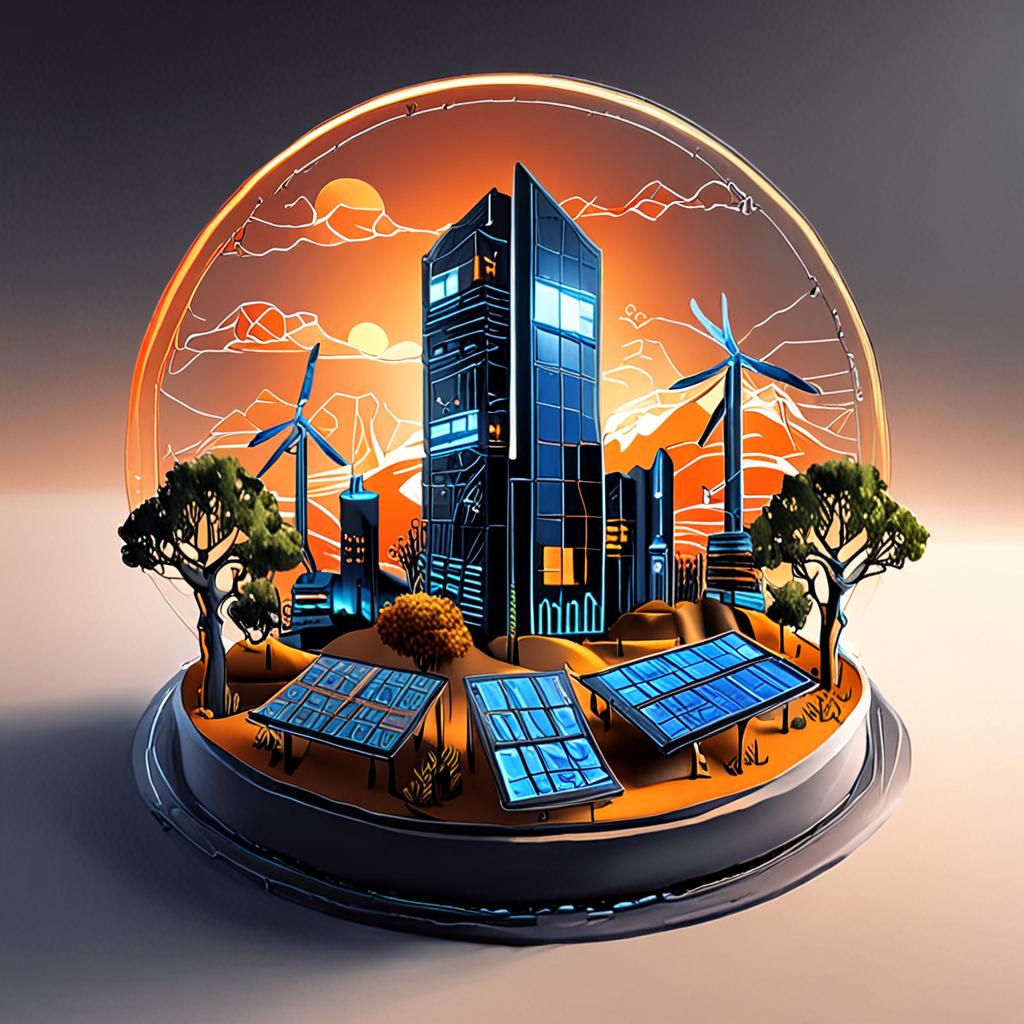Introduction
The world is at a critical juncture in its transition to sustainable energy. Despite the growing demand for renewable power, the sector faces significant challenges in integrating intermittent energy sources into the grid, predicting energy demand, and optimizing energy distribution. Traditional methods of energy forecasting and management rely heavily on human intuition, statistical models, and manual data analysis, which often lead to inefficiencies and inaccuracies.
For instance, a study by the National Renewable Energy Laboratory found that wind power forecasts are often off by as much as 20% due to limitations in data quality and modeling techniques. This can result in grid instability, reduced energy efficiency, and increased costs.
Artificial intelligence (AI) is poised to revolutionize the sustainable energy landscape by addressing these challenges. Techniques such as machine learning, deep learning, and predictive analytics can analyze vast amounts of data from various sources, including weather patterns, energy usage, and grid performance. By leveraging these tools, AI can provide more accurate energy forecasts, optimize energy distribution, and improve grid resilience. But how exactly is AI being applied in the field, and what are the real-world results? In this blog, we’ll delve into the innovative applications of AI in sustainable energy and explore concrete examples of its impact.
Harnessing AI-Driven Predictive Analytics for Optimized Renewable Energy Output
The integration of AI-driven predictive analytics is transforming the renewable energy sector by optimizing energy output and reducing costs. Predictive analytics leverages machine learning algorithms to analyze historical data, weather forecasts, and sensor readings to predict energy output from solar panels and wind turbines. This enables energy providers to make informed decisions on energy distribution, storage, and grid management.
A notable example is the use of predictive analytics by Vestas, a leading wind turbine manufacturer. By leveraging AI-driven predictive maintenance, Vestas was able to reduce turbine downtime by 50% and increase energy production by 2%. This not only results in significant cost savings but also contributes to a more reliable and efficient energy supply.
The application of AI-driven predictive analytics in renewable energy has numerous benefits, including improved forecasting accuracy, optimized energy storage, and reduced maintenance costs. By harnessing the power of AI, renewable energy providers can unlock new levels of efficiency, driving the transition towards a more sustainable energy future. By adopting this technology, the industry can optimize energy output, reduce waste, and ultimately, increase the adoption of renewable energy sources.
Intelligent Grid Management: Leveraging AI for Real-Time Energy Distribution and Storage
Intelligent grid management is a critical component of sustainable energy systems, enabling the efficient distribution and storage of renewable power. By leveraging AI technology, grid operators can optimize energy flow in real-time, reducing energy waste and improving overall grid resilience.
The integration of AI in grid management matters because it allows for predictive analytics, enabling operators to anticipate and respond to changes in energy demand and supply. This is particularly important for renewable energy sources like solar and wind, which can be intermittent and unpredictable.
A real-world example of AI-driven grid management is the partnership between Google and the UK’s National Grid, which uses machine learning algorithms to predict energy demand and adjust supply accordingly. This collaboration has resulted in a 20% reduction in peak energy demand, demonstrating the potential of AI to drive measurable improvements in grid efficiency.
By analyzing real-time data from sensors and IoT devices, AI-powered grid management systems can detect anomalies, predict maintenance needs, and optimize energy storage. This not only reduces energy waste but also helps to ensure a stable and reliable supply of renewable energy, ultimately supporting the transition to a more sustainable and eco-friendly energy future.
Unlocking New Frontiers: AI-Enabled Innovations in Solar, Wind, and Hydro Energy Harvesting
The integration of Artificial Intelligence (AI) in solar, wind, and hydro energy harvesting is transforming the renewable energy landscape. By leveraging AI’s predictive capabilities, energy companies can optimize energy production, reduce costs, and increase efficiency. This innovative approach enables the transition to a more sustainable and eco-friendly energy mix.
The use of AI in solar energy harvesting, for instance, can predict energy output based on weather forecasts, temperature, and other environmental factors. This allows for more accurate energy production planning and reduced energy waste. A real-world example is Google’s AI-powered solar panel optimization system, which has increased energy output by up to 15% in some cases.
The application of AI in wind energy harvesting also yields significant benefits. By analyzing turbine performance and environmental conditions, AI can optimize wind turbine placement, angle, and speed, resulting in increased energy production and reduced maintenance costs. Similarly, AI can enhance hydro energy harvesting by predicting water flow rates and optimizing turbine performance. By driving measurable improvements in renewable energy production, AI is playing a crucial role in unlocking a more sustainable energy future.
Conclusion
Artificial intelligence (AI) has transformed the sustainable energy landscape by optimizing renewable power generation, predicting energy demand, and streamlining grid management. By leveraging machine learning algorithms and data analytics, AI has enabled the development of more efficient, cost-effective, and eco-friendly energy solutions.
To capitalize on AI’s potential, renewable energy professionals and organizations should:
- Experiment with AI-powered predictive maintenance to reduce downtime and increase the lifespan of wind turbines, solar panels, and other critical infrastructure. By analyzing sensor data and identifying potential issues before they occur, AI-driven maintenance can help minimize energy losses and optimize overall system performance.
- Adopt AI-driven energy storage solutions that can efficiently manage the variable output of renewable energy sources. By optimizing energy storage and release, AI can help stabilize the grid, reduce energy waste, and ensure a reliable supply of clean energy to meet growing demand.
